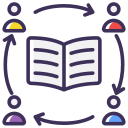
AI Tools for Designing Tailored Educational Journeys
Harnessing the power of artificial intelligence in education is transforming the way learners experience their academic paths. AI tools are enabling educators and organizations to design customized learning journeys that adapt to the unique needs, preferences, and progress of each student. These innovative solutions offer unprecedented opportunities to personalize content, streamline assessments, provide dynamic feedback, and foster student engagement. By integrating AI-driven insights and automation, tailored educational journeys become not only achievable but scalable across diverse learning environments. This approach promises to enhance student outcomes and satisfaction while empowering educators to focus on creative and high-value aspects of teaching.
Personalization Through Data-Driven Insights
Adaptive Learning Algorithms
Intelligent Content Recommendation
Predictive Analytics for Early Intervention
Streamlining Assessment and Feedback



